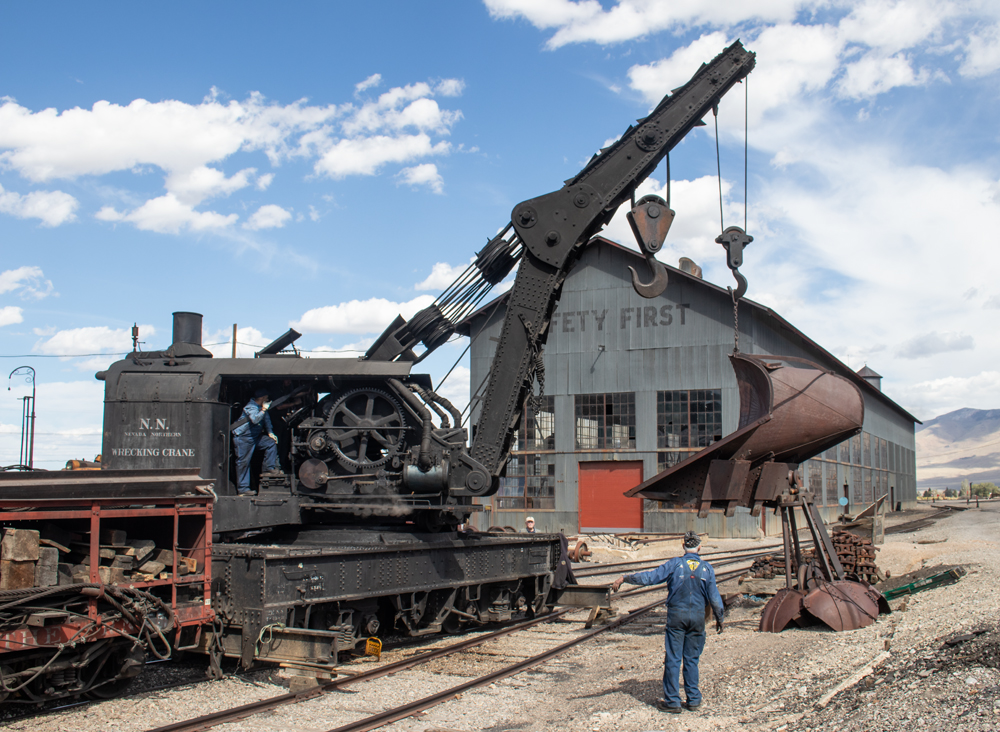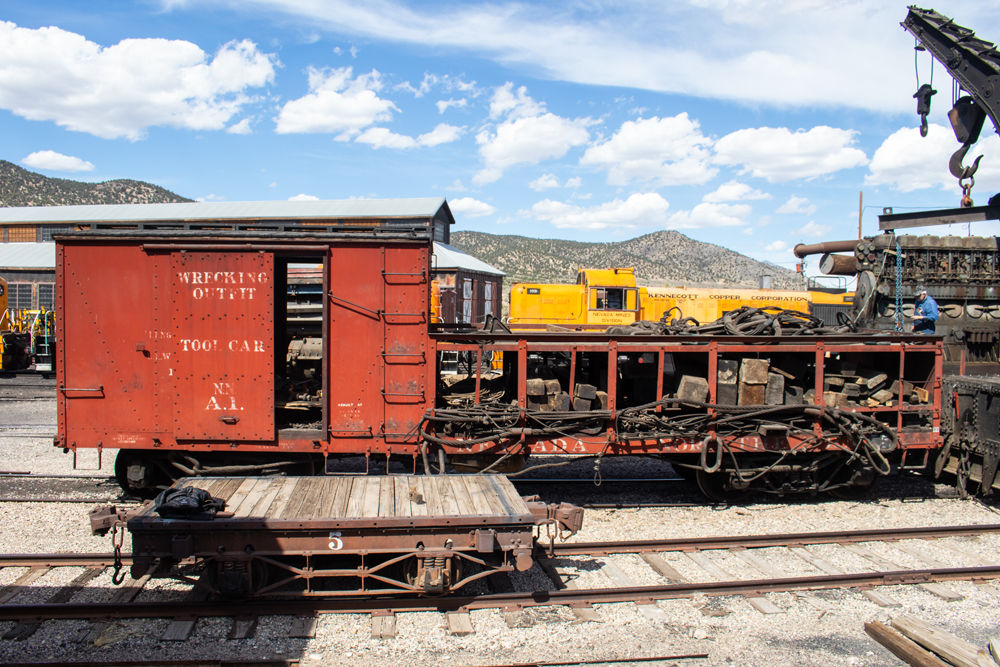
Wrecking derricks were once the kings of maintenance-of-way equipment, used mainly to move derailed rolling stock but also for such other heavy-lifting duties as bridge replacements. Today, when a derailment needs to be cleaned up, the work is often done by private contractors using bulldozer-like machines delivered to the wreck site by highway. But fifty or more years ago, the railroad would bring in its own specially designed rail-mounted crane, known as a wrecking derrick or ‘big hook.’
As rolling stock became larger and heavier, wrecks could no longer be cleared with men and animals pulling on blocks and tackles. To develop a faster and safer method for handling wrecks, the railroads sought help from the builders of the first steam-powered lifting devices.
The Industrial Works of Bay City, Mich., (later Industrial Brownhoist Corp.) pioneered the development of derricks. In 1883 the company built the first steam wrecking crane, a machine with a 20-ton lift capacity. Ten years later it turned out the first fully revolving derrick. Around the beginning of the 20th century, capacities increased from 40 to 100 tons. In 1913 Industrial Brownhoist built a 120-ton model, followed shortly by 160- and 200-ton derricks. Finally, in 1941 IB rolled out a 250-ton model. The other major derrick maker was Bucyrus-Erie Co. of South Milwaukee, Wis.; its line also contained a 250-tonner. American Hoist & Derrick Co. of St. Paul, Minn., made a few wreckers, but mostly produced cranes for lighter MofW and industrial uses.
Like steam locomotives, steam derricks used coal or oil for fuel. As the railroads switched to diesel locomotives in the late 1940s and ’50s, many coal-fired derricks were converted to burn oil. Later, many derricks had their steam boilers and engines replaced with diesel-electric power plants, and some were built as diesels. Before the diesel era, a few had gas-electric or all-electric power systems.
Many models had propulsion equipment allowing them to move at speeds of 4 mph or less; this was used for minor positioning only, not moving to a job site.
Most wreck derricks had two hoists: main and auxiliary. The auxiliary hook, located at the end of the boom, couldn’t lift as much as the main hook (60 tons vs. 250 for the biggest types), but it had a greater reach and was suitable for moving most debris and cars. The function of the main hoist was to lift and drag locomotives back to the roadbed and onto the rails. Cable slings, chains, and spreader bars were used with the main hoist the hook itself was never attached directly to the load.
When a wreck occurred and the call went out for the derrick, the crew was mustered to the special wreck train and it left its terminal as fast as possible. With people possibly trapped in the wreckage, lives depended on the big hook’s speedy arrival. The railroad also needed to reopen the line for its normal traffic. Expedited handling of derricks was all the more important because of the speed restrictions imposed on them; 35 mph with the boom trailing, and 25 with it leading were common limits.

Derricks required considerable support gear and personnel. They were mated with special flatcars (boom cars) which accommodated the overhanging boom and equipment needed in the clean-up operation.
Because a wreck train might be on a job for days, provisions for feeding and resting the crew were needed. Old passenger cars or converted boxcars held kitchen, dining, and bunk areas. There was also a tool and storage car for torches, lights, generators, cables, and chains.
Finally, there were flatcars loaded with sections of panel track to replace track damaged in the wreck. Like fire engines, derricks and their support cars were infrequently used but had to be in top condition when needed, so they were well-maintained and received fresh paint frequently.
When the wreck train neared the wreck site, the derrick and boom car would be switched out. The locomotive would then push the derrick up to the wreck. Often, two derricks would work a job, one from each end. The process for preparing the derrick was to extend the outriggers (to avoid tipping and prevent excessive load on the derrick’s running gear) and determine the needed boom angle and which hoist to use.
Great care was taken in working the wreck site. The breaking of a chain or sling could send the load toppling down on anyone not in the clear. The wrecking process would continue around the clock until the line was reopened to traffic.
Railroads have turned away from using old, rail-bound derricks. It’s cheaper and faster to contract the work out to clean-up companies, whose side-boom crawler tractors can come alongside wrecked cars.
While big hooks were once stationed every 75-100 miles, now only a few derricks remain.














some railroads still use the Big Hook and hive them in the MOW pool.
Did New York Central have any Bucyrus Erie Derricks or were they all Industrial Brown Hoist?
You forgot the 1938 20TH CENTURY LIMITED with Dreyfus Streamlined Hudson in your trains of the 1940's and 1930's!!!
Also how could you leave out the 1938 BROADWAY LIMITED?
Dave Smith